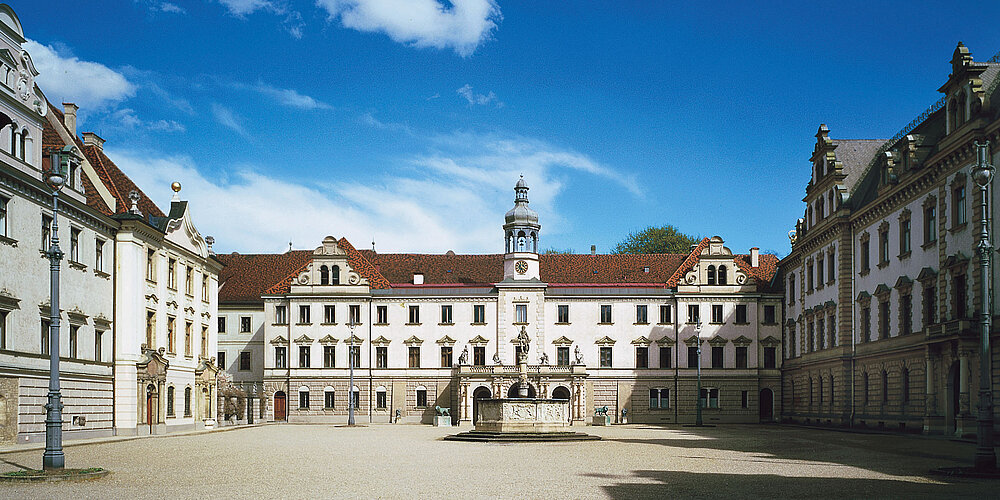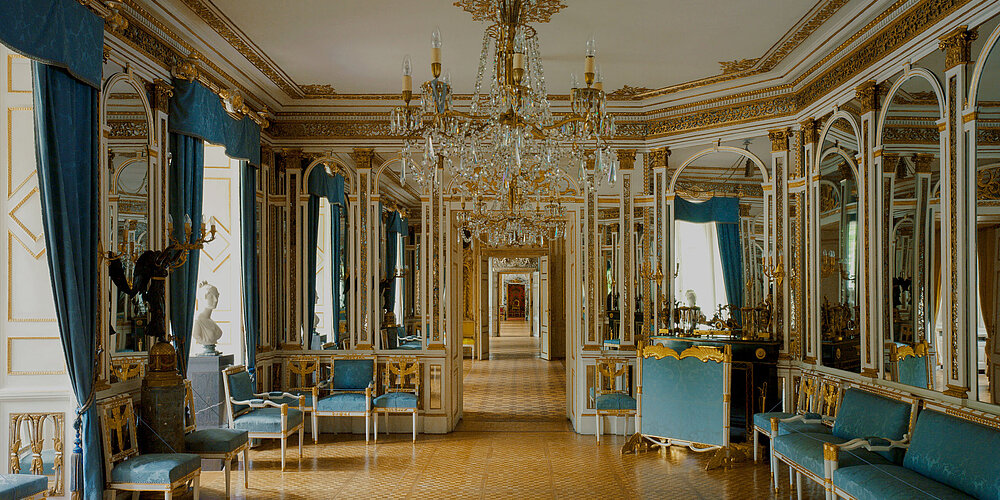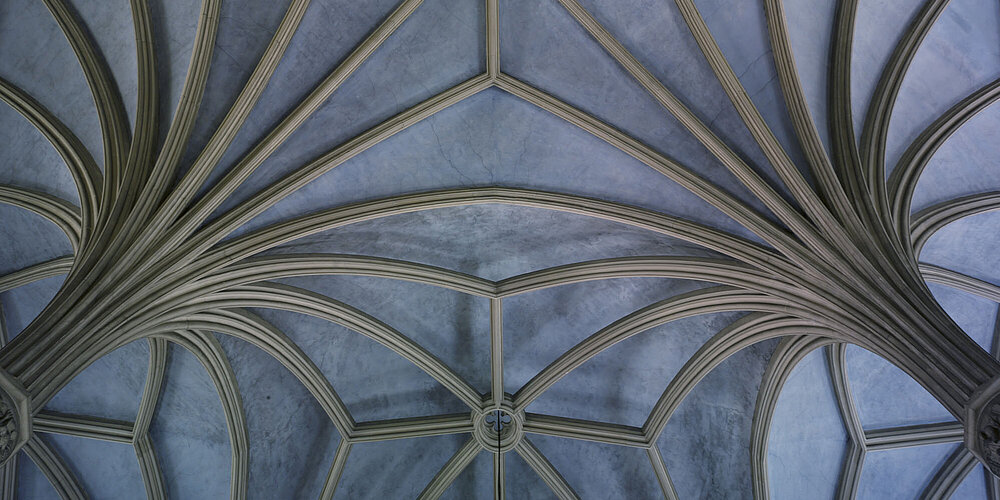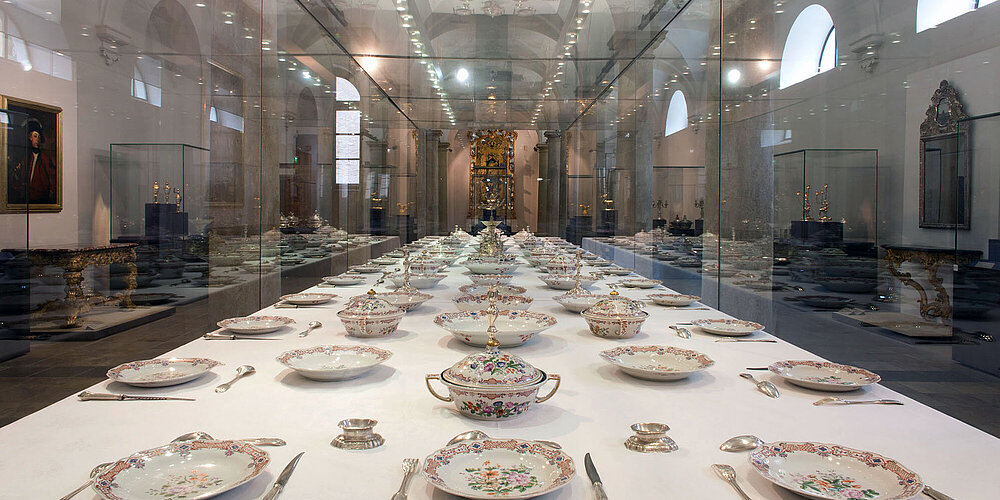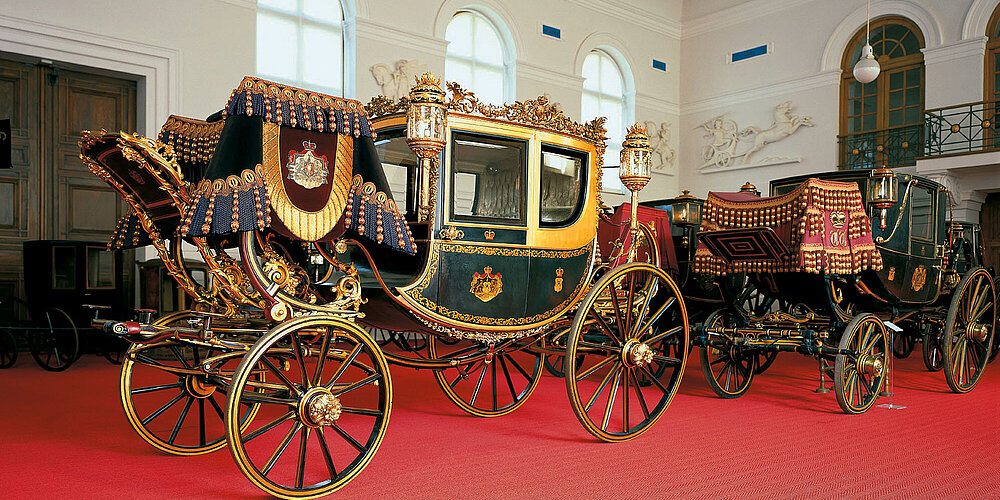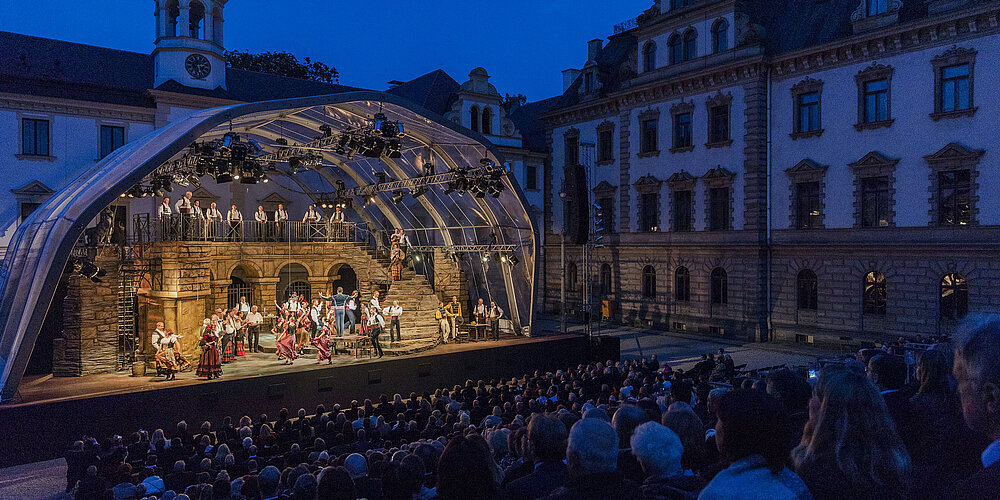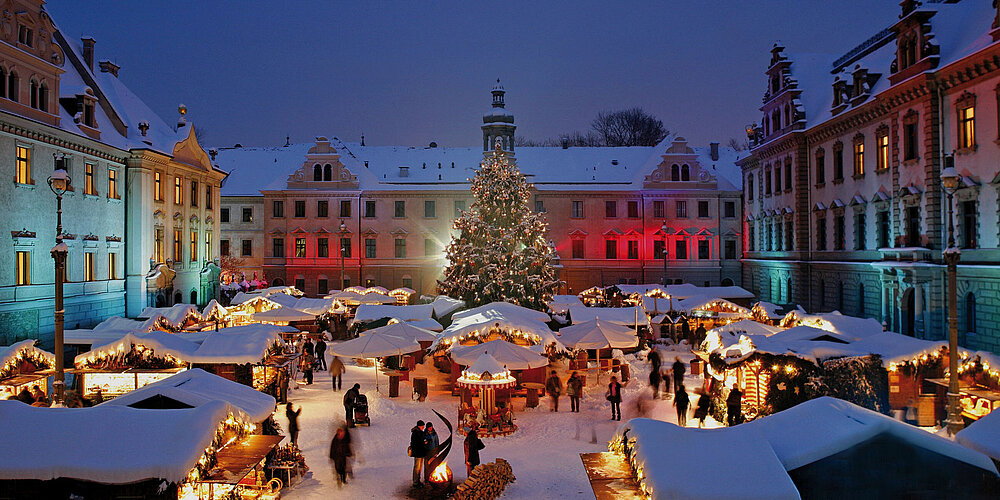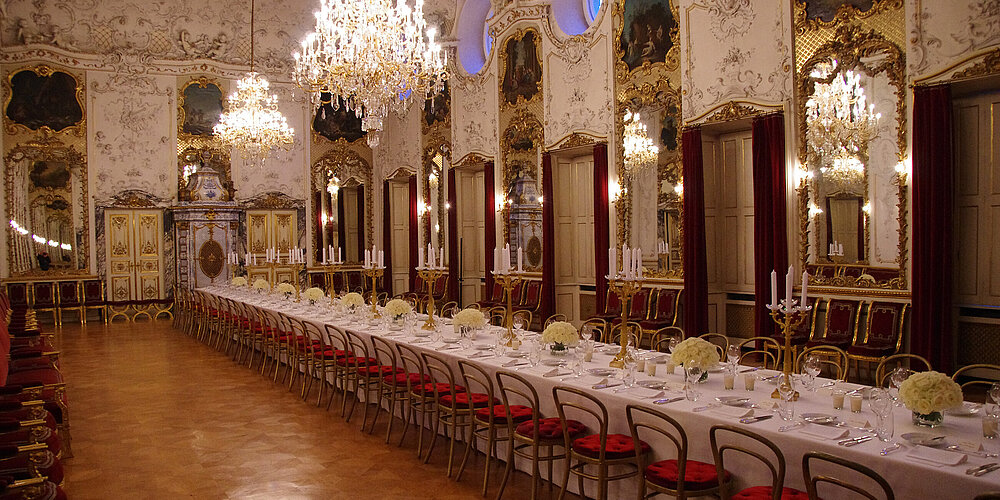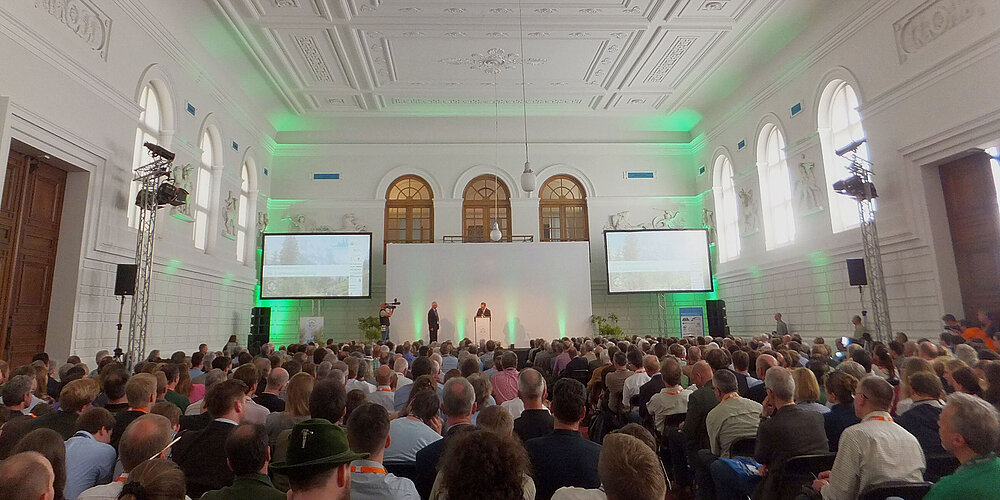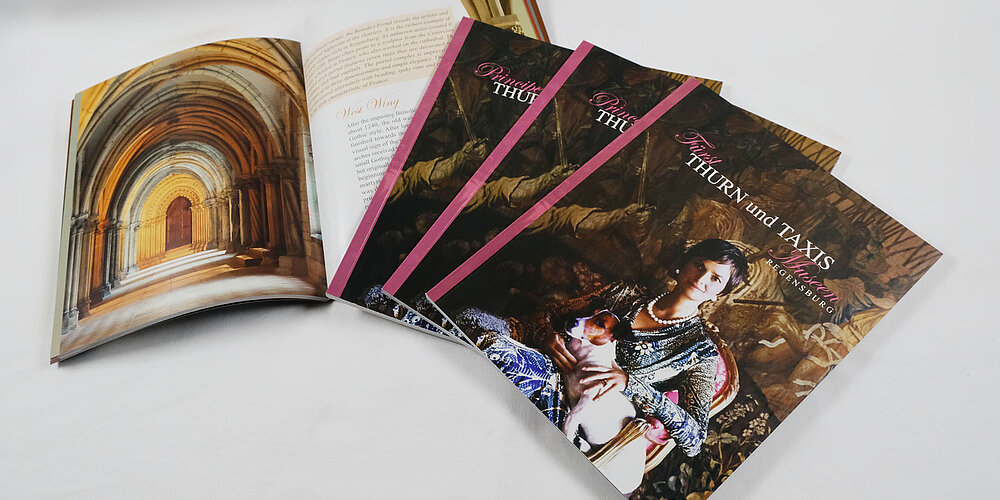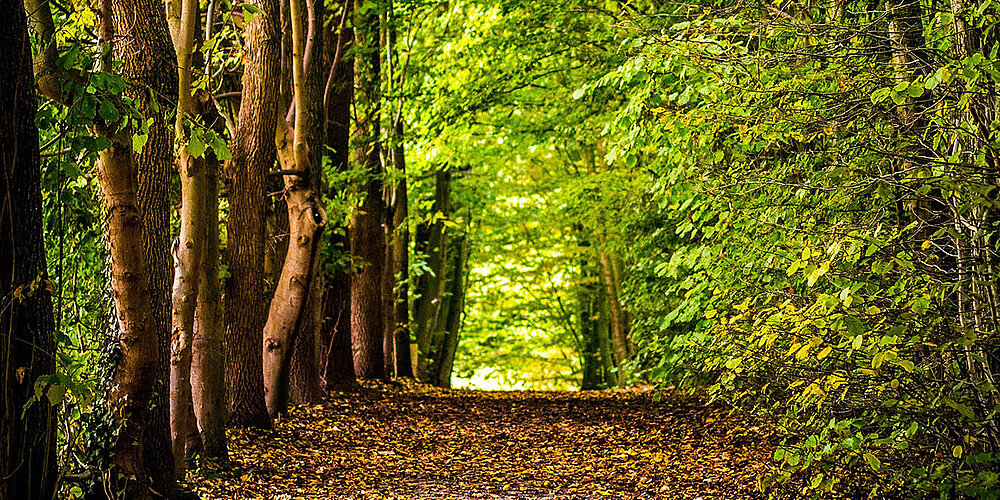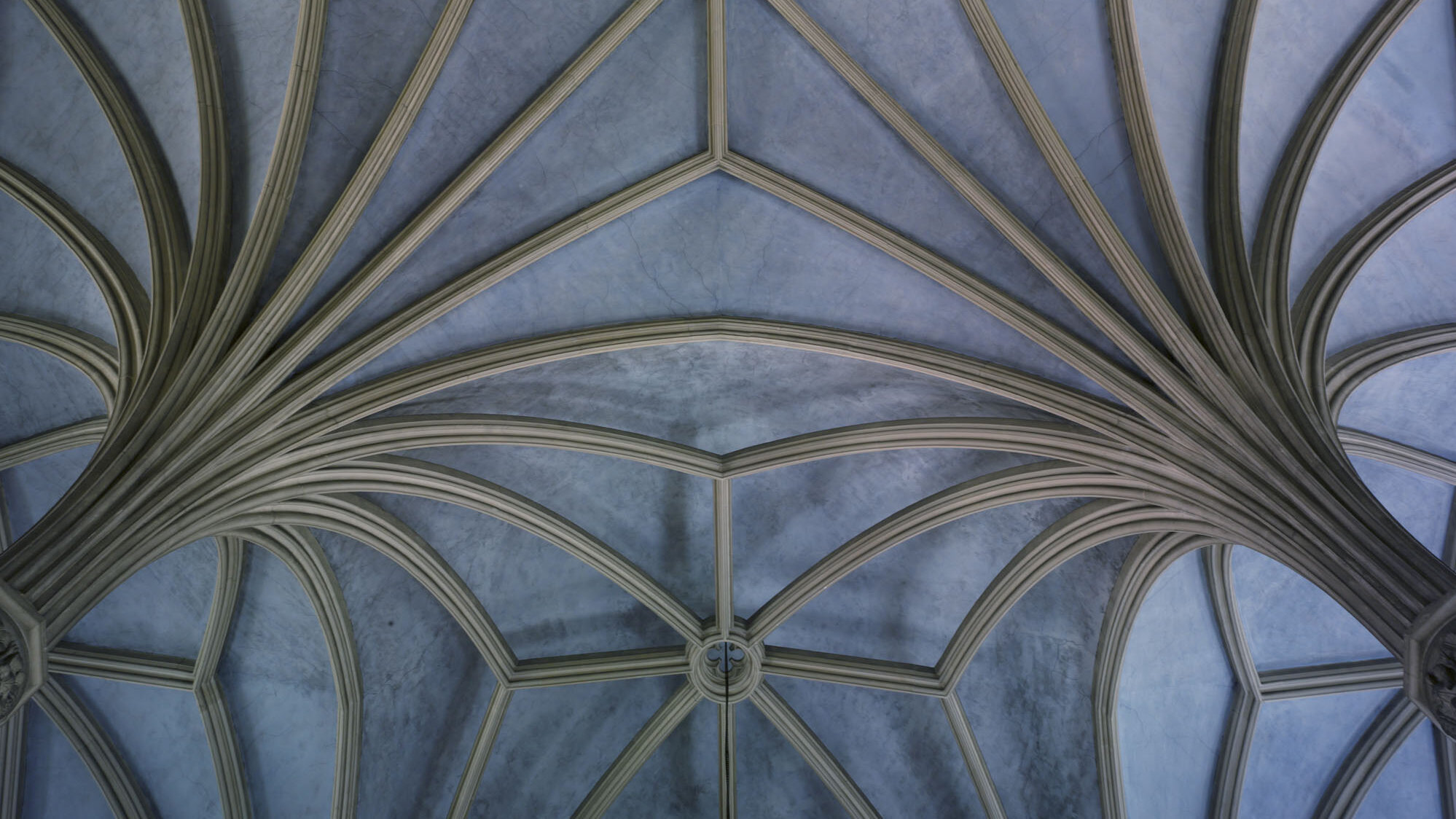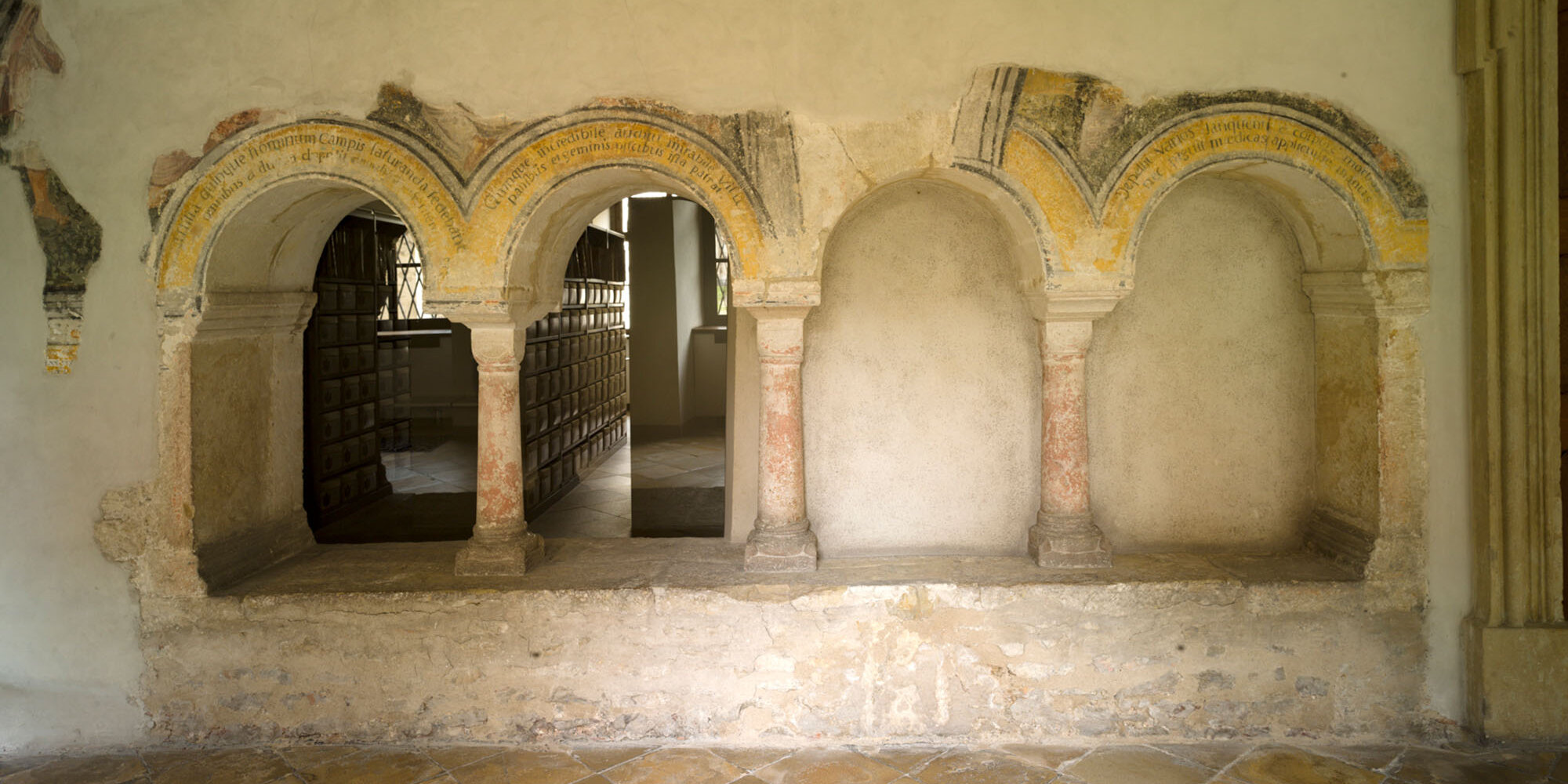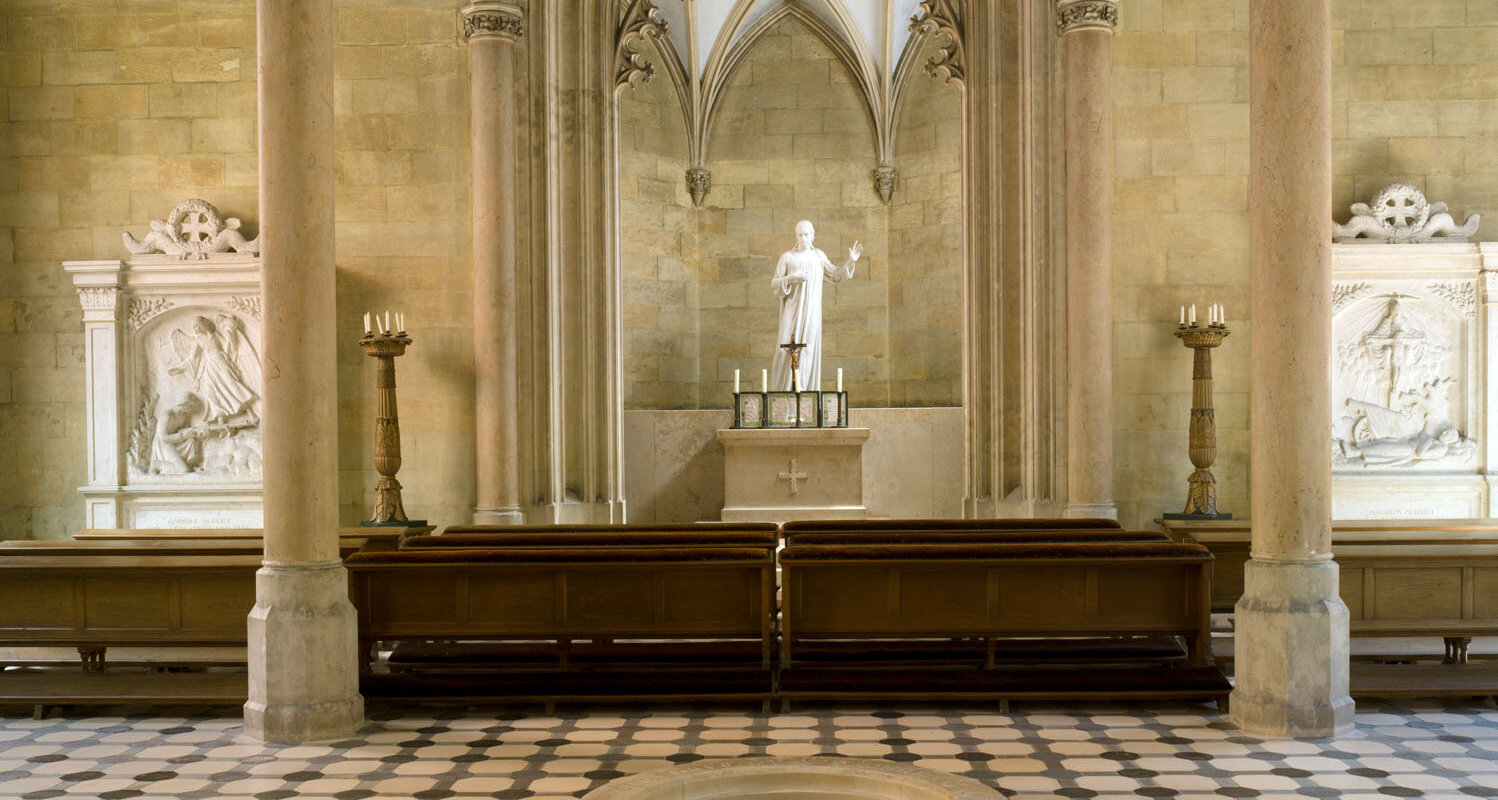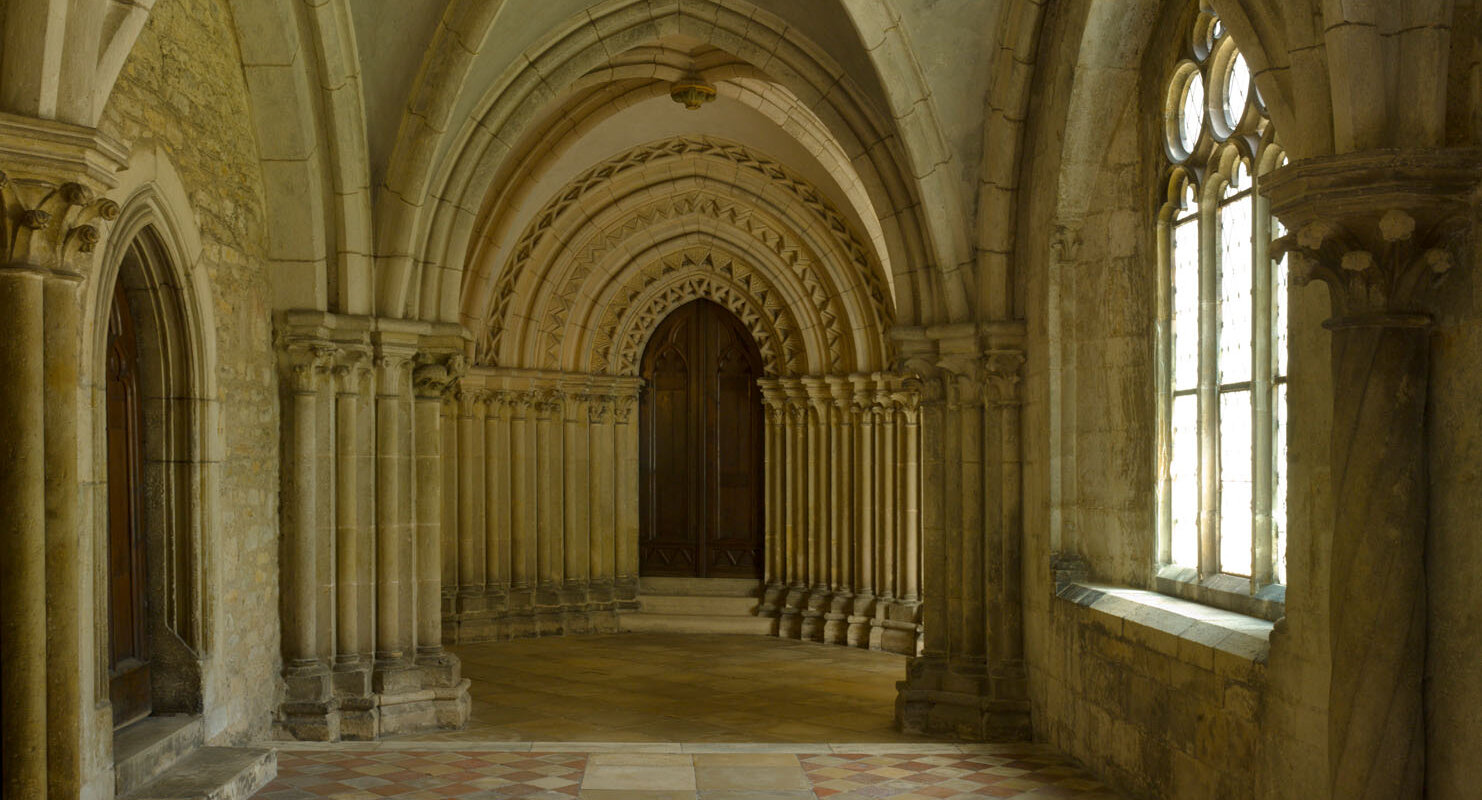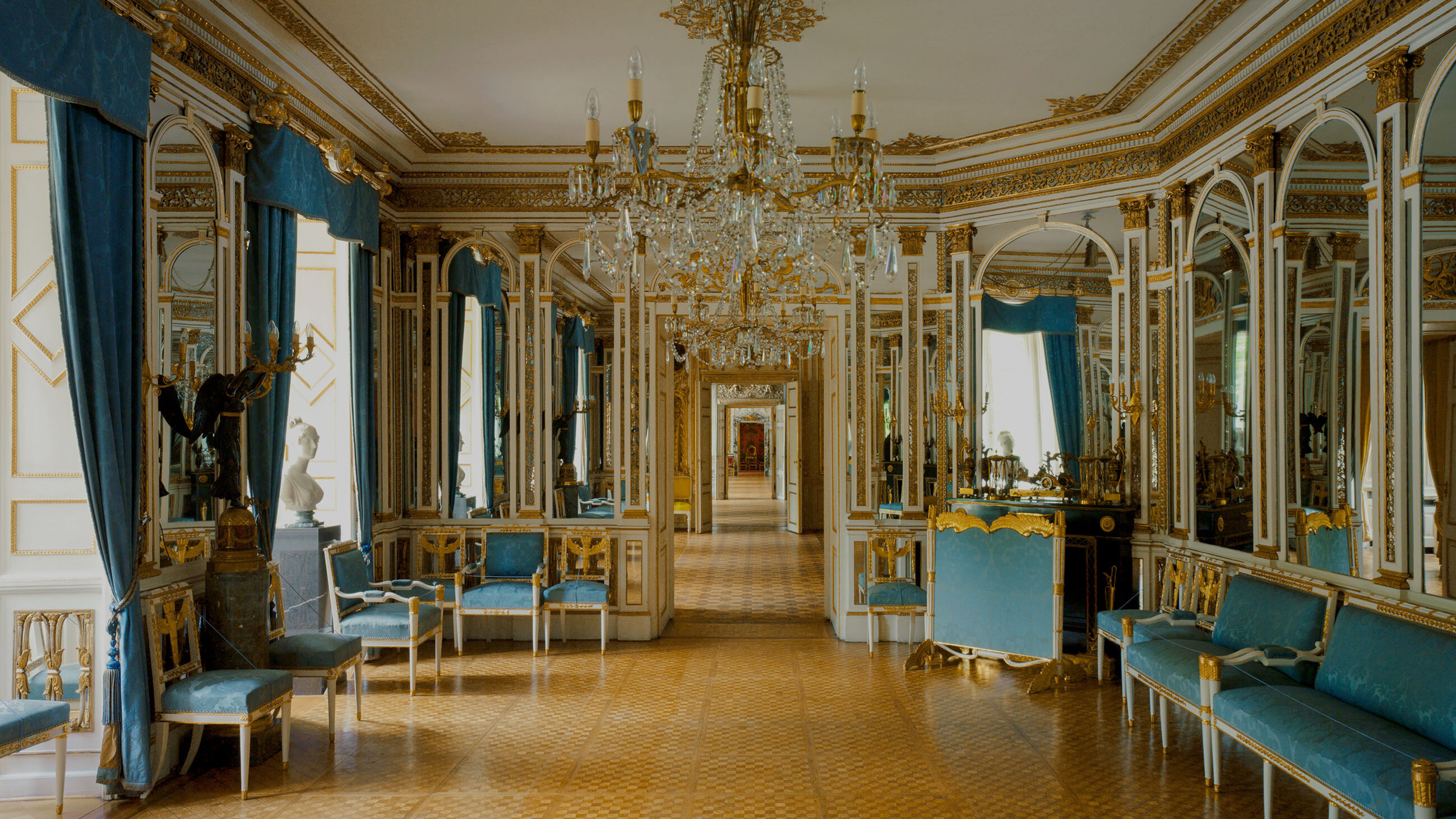The Cloister
St. Emmeram is now the residence of the Princes of Thurn und Taxis, but it was one of the West’s most significant Benedictine monasteries until 1810. The structural style of the old imperial abbey has been preserved to this day and the cloisters still exude the asceticism and tranquillity of monastic life, in addition to the magnificent ceremonial architecture in the state rooms.
The Monastery
The monastery was established around 800 near the grave of the Franconian bishop Emmeram. It was among Europe’s most important cultural sites for centuries. Like in the other major Benedictine monasteries along the Danube, Christian faith, but also art and science, were cultivated here for 1,200 years. This glorious monastic tradition came an abrupt end when the imperial abbey was secularised in 1810.
The Crypt Chapel
Prince Maximilian Karl commissioned the construction of a crypt chapel for the Princely family in the medieval cloister gardens between 1835 and 1841. It is considered the most important neo-Gothic Princely mausoleum in German historicism. The figure of Christ stands at the centre of the light-flooded choir. It was fashioned from white Carrara marble by the South German sculptor Johann Heinrich Dannecker.
The West Wing
The Benedictus Portal in the west wing, one of the most beautiful High Gothic portals in Regensburg, allowed the abbots of the monastery to enter the basilica. The Princely family has used this portal to enter the Basilica of St. Emmeram through on special occasions since the monastery buildings were handed over to the House of Thurn und Taxis in 1812.
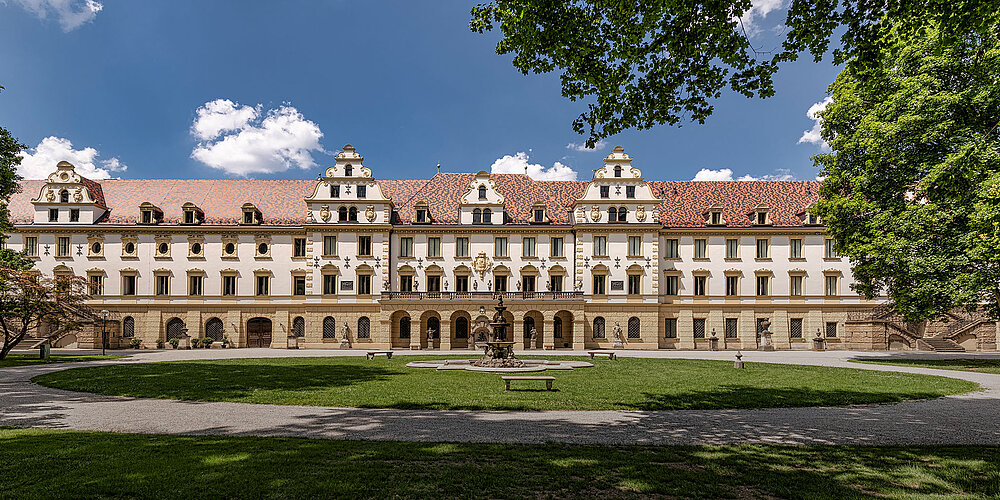
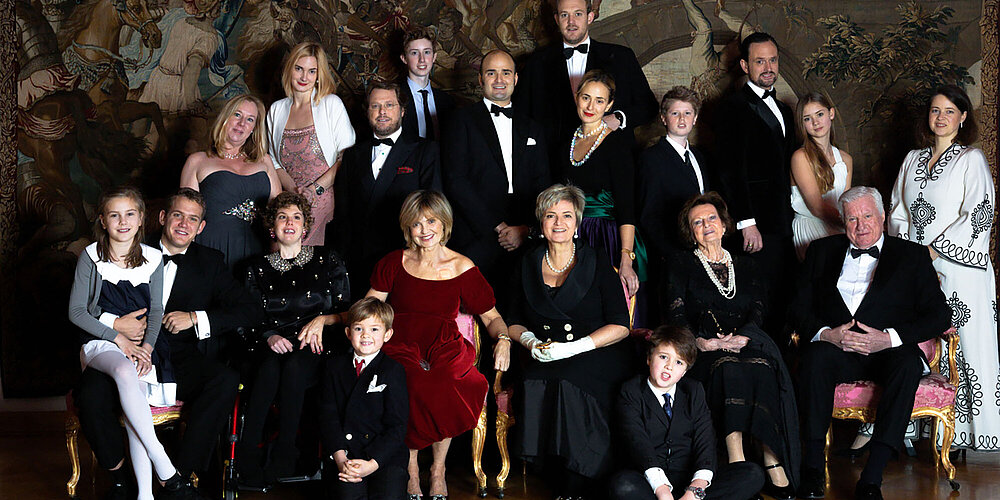
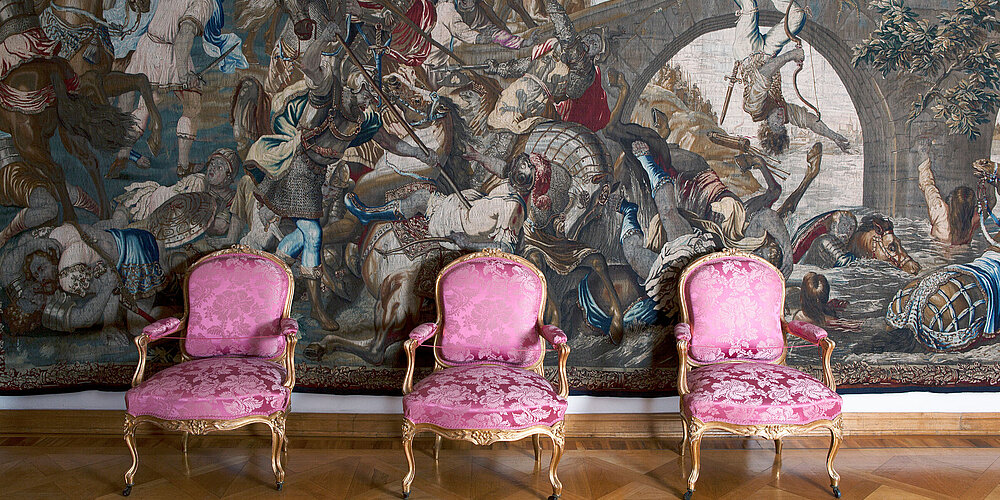

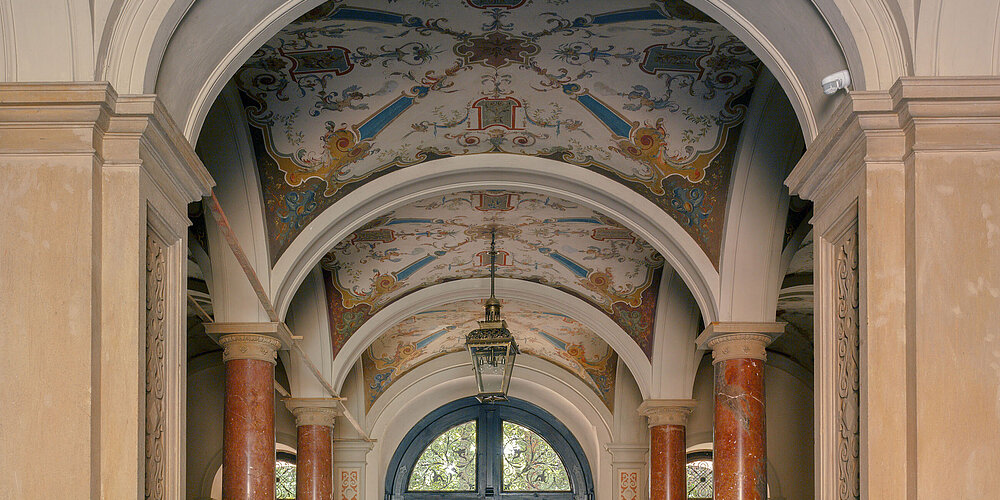
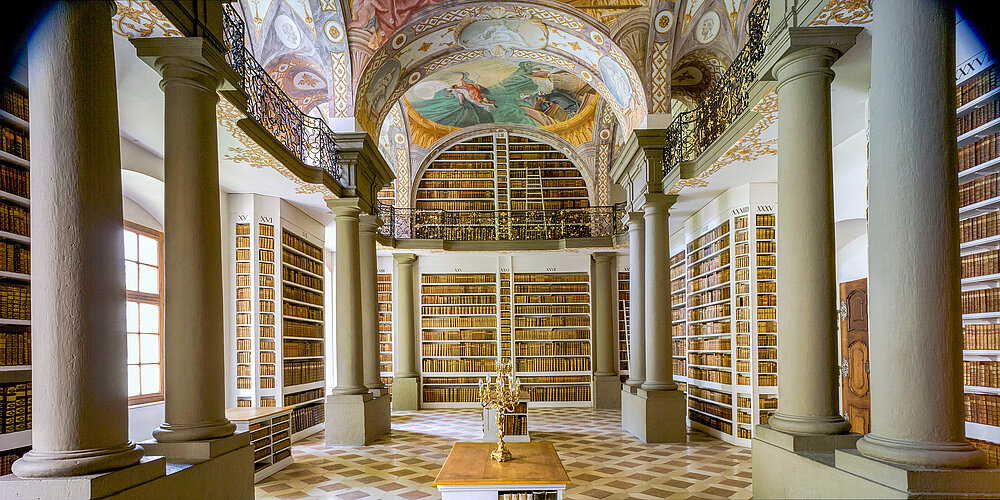
![[Translate to EN:]](/data/_processed_/8/e/csm_betriebsteile-00_ee45ff1096.jpg)
